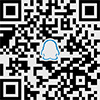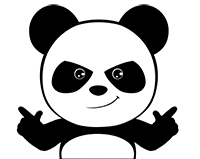“像素音频(Pixel Audio)”制作现场
《劳拉GO》作曲工作室“像素音频(Pixel Audio)”采访
Q&A with Lara Croft GO composers, Pixel Audio.

How was the original music from the classic Tomb Raider games part of your inspiration for Lara Croft GO?
We were inspired by the work of Nathan McCree (Tomb Raider I, II and III) in the early stage of production. His musical composition hints to something grandiose and mysterious, almost religious, with a feeling of loneliness, while remaining luminous.
Our challenge was to keep these key elements while acknowledging that Lara Croft GO is a completely different game than the franchise. It’s a turn-based puzzle-adventure game. Even though it can become very intense at times, there are no action sequences per se. We decided to go for a softer and more ambient mood in general.

Before the soundtrack was even completed, the idea was thrown around that it could be released on vinyl. Did that decision influence the creation process in any way?
When we started to compose, we didn’t know yet that the soundtrack was going to be released. The distinctive sound of the vinyl inspired us from the very beginning. At the time, we were already in the process of creating virtual instruments based on vinyl samplings. It just seemed like a good timing to try it out and integrate it in our music.
In our perspective, the connection one has with vinyl records today is similar to how one relates to bigger than life characters like Lara Croft. They have become collector items, even treasures. We wanted to highlight this parallel by creating unique and raw music, whose design remains mysterious.

Lara Croft GO’s soundtrack is very much filled with the game’s sound effects. Is that something you are used to doing?
Not at all! When playing the game for the first time, we were extremely impressed by the work of James Wearing (audio lead and sound designer at Square Enix Montréal). The soundscape of the game has such musicality, it felt like an additional instrument. We wanted to include it in the soundtrack to give it justice.
It is also a reference to concept albums from the 70s. Every track of the album is introduced by a different acoustic environment, which is directly related to the location where the music plays in the game. In short, we felt that the audio experience would not be complete without the addition of James’ work.

LCGO is a puzzle game. You were asked to create a music that helps focusing on the gameplay while being pleasant. How did you work on achieving this?
We were fortunate enough to have a copy of the game early on in development and we played a lot (we are incurable gamers).
During those sessions, we were listening to our unfinished music in the background, but also other kinds of music. It was easy to tell what worked and what didn’t. We listened to many records: Tangerine Dream, Moby, The Mysterious Cities Of Gold Original Soundtrack, music from the Tomb Raider games and many more.
We also established from the get-go that the music had to be constantly changing and be very atmospheric. On one hand, we wanted to prevent the loops to be heard too easily. On the other, we didn’t want the music to interfere with the player while thinking.

People are always curious to know what are the most unusual instruments composers use. Any jump to mind?
We used a Guzheng. It’s a traditional Chinese plucked string instrument. The oldest traces of this instrument dates from 771-453 BCE. It seemed extremely interesting for us to bring an instrument rooted thousands of years ago together with modern sounds. Also, the sound of the Guzheng gives the feeling that we’re travelling across time and civilizations. It seemed an excellent parallel to make with a character like Lara Croft, which is both an archaeologist and adventurer, visiting ancient tombs and mysterious ruins.
We also used sampling to create original virtual instruments. We spent hours listening to vinyl records in search of isolated sounds. The majority of the instruments that can be heard in the game come from sampling. Not to mention the sparing use of electric guitars.

You got to play the soundtrack of the game live during PAX, in Seattle. Was it the first time you played a soundtrack live in front of an audience?
Yes!!! And it was awesome! We all come from the live music scene, here in Montreal; We are, or we were, all members of music bands. It was a pleasure to go back on stage and share Lara Craft Go music, which we are very proud of. We hope we’ll have the chance to reproduce this kind of event again in a near future.

The style is very different from your previous work on Hitman GO and Hitman: Sniper but also different from what was previously done in the Tomb Raider/Lara Croft franchise. How did you end up finding the vibe for Lara Croft GO’s music?
We wanted to create something special, just like the game itself. The team at Square Enix Montreal sent us unusual musical references from the beginning, like Trip-Hop and Surf Rock. We immediately realized that they were looking for a unique musical landscape.
However, from an emotional point of view, the style is not so different from what exists in other Tomb Raider games. It contains the same leitmotifs: mystery, solitude, discovery and adventure. As far as arrangements go, we tried to rethink everything.
It’s while listening to music and experimenting with vinyl that we came up with the style. Albums like Rubycon by Tangerine Dream, Mezzanine by Massive Attack and the Mysterious Cities fo Gold OST greatly inspired our creativity.



One of the most important aspects of the game’s audio is the sense of ambience. Sound had to be carefully designed to mesh seamlessly with the game’s soundtrack.
Today we have a Q&A with James Wearing, the sound designer at Square Enix Montreal.

Q. What was the source of your inspiration for creating the soundscape for Lara Croft GO?
JW: We drew a lot of inspiration from the original game in the franchise and we made a conscious effort to select some of the most memorable sounds and re-use them in Lara Croft GO. The game is a combination of old school and new school audio, mixing together sounds from the original in a way that fans of the original will really love. For example, when you find one of the artifact pieces you’ll hear the original chime sound from Tomb Raider 1, and in the caves we re-used some of the original tomb raider 1 ambience sound effects. Players who remember the original game will immediately recognize these sounds and it’s a nice way to pay tribute to the original franchise in a modern way.

Q. What were some of biggest challenges in creating the sounds for Lara Croft GO?
JW: The hardest part has been making sounds that are suited for a puzzle game so that each sound can be played back often but they don’t become annoying or distracting… but at the same time the sounds still need to be interesting. There’s a correlation where the more interesting and complex a sound is, the more annoying it becomes when you hear it repeated. As someone who’s often made “big” sound design in the past like guns and explosions for movie trailers it can be challenging to maintain that feeling of powerfulness and sonic complexity but in a simple small puzzle game. It involves a process of simplifying sounds (in terms of how many layers and how many characteristics are present) and making the sounds feel smaller on purpose so they can blend more seamlessly into the puzzle gameplay.

Q. How are sound effects actually “made”?
JW: For this game the source of sounds generally come from either being custom recorded with a recording device, or from commercial sound effect libraries. From this point lot of signal processing occurs. Sounds are manipulated with software such as changing the pitch, reversing them, doing all sorts of twisting and bending of the sounds to come up with something interesting and new. These processed sounds are then combined together, in whole or in part, to create more complexity and more interesting sounds. Generally speaking I do most of my processing directly inside Soundminer and I export the resulting audio into tracks in Pro Tools. Once inside Pro Tools the various processed audio clips from Soundminer are further combined together and manipulated in order to create new sounds. From Pro Tools the sounds are imported into our game engine and hooked into the various gameplay mechanics of the game.

Q. What is your favorite sound or set of sounds from the game?
JW: I really like how the Queen turned out during the last levels of the game. She has a lot of interesting movement and slithering sounds that feel menacing.

Q. How did you make the Queen sound so unique?
JW: The Queen sounds are a combination of animal and creature sounds which have been processed, pitched, modulated, and combined to create something new. We also added metallic creaks and scrapes which I processed to add movement and a menacing quality to the sound. I would modulate the amplitude of metal bending and creature sounds to give a “flutter” feeling to the sound, which fits with the slithering of a snake. I’d also add subtle granular processing effects, which would give certain layers within the sound a stylized quality.
Q. What are some of the software programs you use for creating sounds?
JW: I use a combination of Pro Tools with Soundminer and a huge arsenal of VST plugins. Some of my most often used plugins are Soundtoys and Isotope’s RX but there are lots of other individual plugins that I go to for various purposes.





